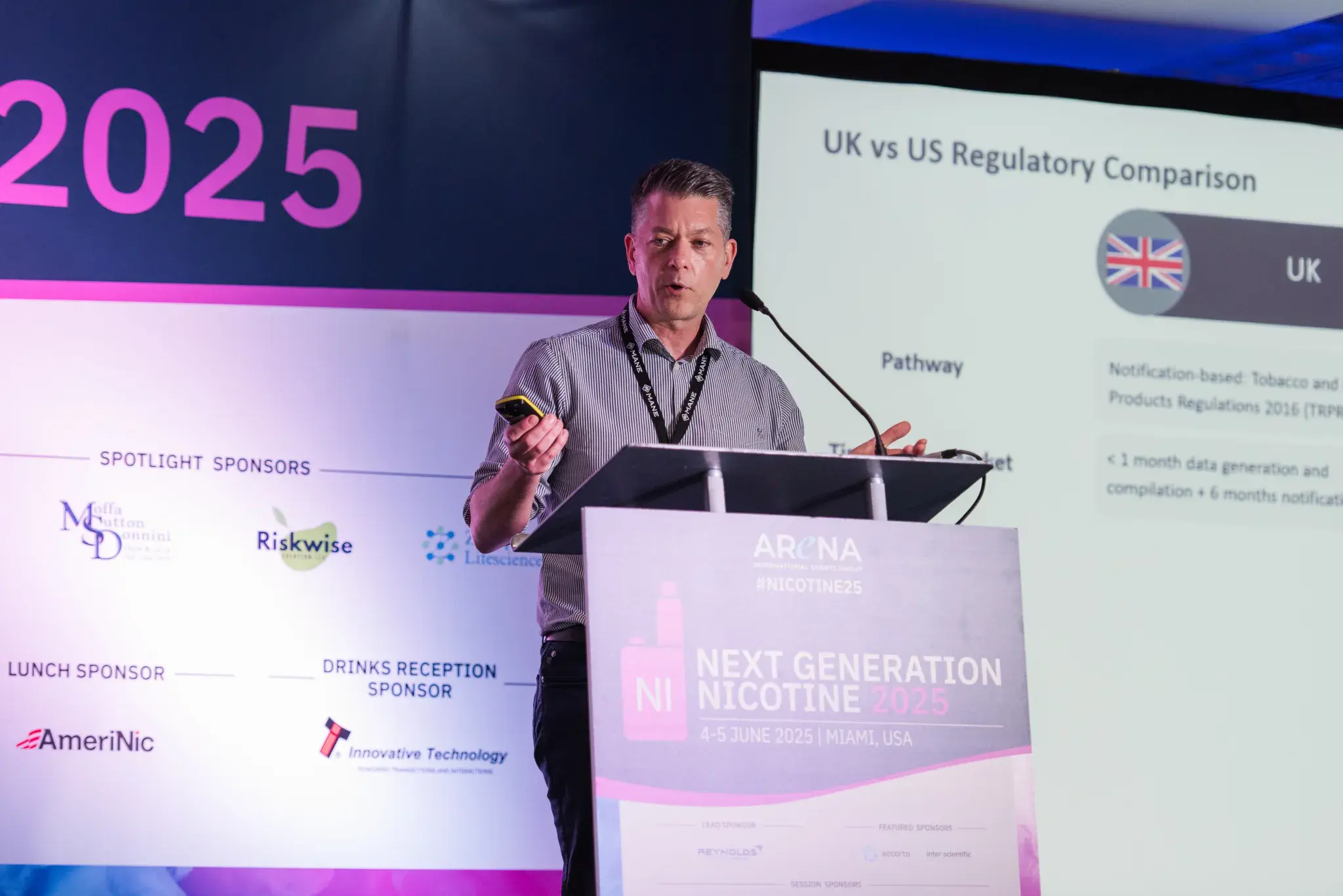The inaugural PouchEx 2025 conference, dedicated exclusively to nicotine pouches, was a niche event that created an intimate and highly focused atmosphere. With top-tier exhibitors, leading...
Navigating the Future of Reduced-Risk Nicotine Products: Insights from NGND Miami 2025
Nicotine

Jun 9, 2025 | Published by Andrew Mooney
Nicotine, Events
The Next Generation Nicotine Delivery (NGND) conference in Miami delivered an energetic and insightful dialogue on the future of reduced-risk products in the U.S. and beyond. With the FDA’s direction high on the agenda, discussions were robust, and the tone was one of cautious optimism, tinged with the reality of continued challenges.
The conference opened with a keynote panel moderated by Agustin Rodriguez of Troutman Pepper Locke LLP, featuring Lillian Ortega (WoW Solutions), Azim Chowdhury (Keller and Heckman LLP), and Guy Bentley (Reason Foundation). Each offered valuable insight into the evolving FDA landscape.
Lillian Ortega noted a welcome shift in tone from the agency, pointing to a greater emphasis on both enforcement and the need to support innovation. She highlighted that enabling legal, reduced-risk products to enter the market more efficiently could play a pivotal role in displacing illicit offerings.
Azim Chowdhury offered a more critical perspective, arguing that the FDA's current pace continues to favour the illicit market over legitimate, science-backed innovations. “FDA should be facilitating innovation,” he asserted, “not inadvertently encouraging consumers to seek unregulated alternatives.”
Guy Bentley echoed the sentiment that while the administration may not be averse to nicotine, rhetoric must now translate into practical regulatory reform. He likened the situation to the war on drugs: enforcement alone will never be enough to suppress an illicit market that adapts quickly to consumer demand.
Broughton CEO Chris Allen added a crucial dimension to the discussion by focusing on what comes after an MGO is achieved. He emphasised that a PMTA is not an endpoint, but the start of an ongoing regulatory journey that includes scientific monitoring, consumer studies, and adverse event reporting. Planning such regulatory projects with the end in mind, he noted, is essential for long-term compliance and stewardship.
As the first day drew to a close, the calibre of conversations remained strong. One of the most compelling presentations came from Sarah Baxter-Wright (RAIS), who shared powerful data comparing the switching power of menthol flavours versus tobacco. The evidence underscored how menthol products can drive greater behavioural change among adult smokers, further supporting the case for a nuanced approach to flavour regulation.
This theme was echoed in a joint presentation from Sony Sisodiya (JTI) and Joshua Karelitz (Altria), who discussed a forthcoming PMTA submission related to a joint venture product for the U.S. market. Their data demonstrated reduced exposure to harmful constituents and highlighted increased switching rates associated with menthol flavour profiles.
Dr Jessica Zdinak (ARAC) offered a valuable shift in focus to behavioural science, highlighting the importance of understanding consumer needs, identifying market gaps, and using rapid, iterative feedback to improve product design and accelerate time to market. Her emphasis on user-centred development aligned closely with broader calls for adaptive and responsive product innovation.
Tobias Baude (Imperial) provided a broader view of industry transformation, discussing how consumer research is helping align new product formats with specific user personas. He also reflected on universal challenges: misinformation, inconsistent regulatory enforcement, and the growing disconnect between static regulations and fast-moving consumer expectations.
While the absence of the FDA at the event was disappointing, there is anticipation that forthcoming announcements may provide clearer, more actionable guidance for the sector. One clear takeaway: enforcement must be balanced by reform. The industry needs a dual approach, clamping down on illicit actors while creating a regulatory framework that enables innovation and accelerates access to safer alternatives.
The hope remains that collaboration between industry, science, and regulators will create a pathway that truly prioritises public health through reduced-risk nicotine products.
If you are looking for more information on how Broughton can support your drive into the US market, get in touch with our expert team.



